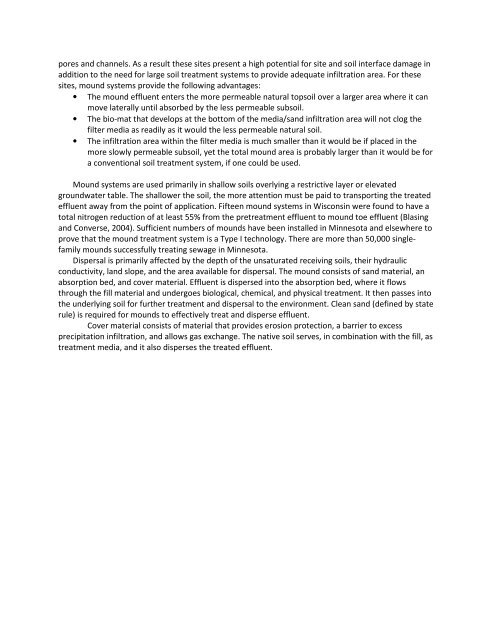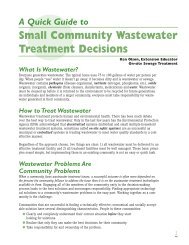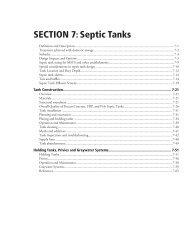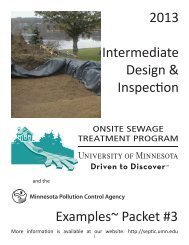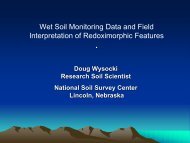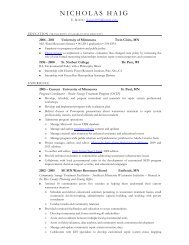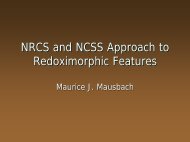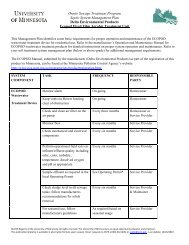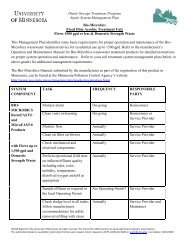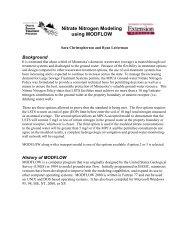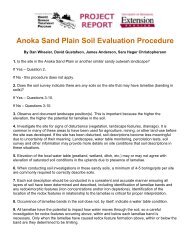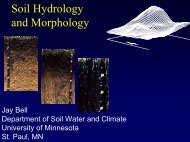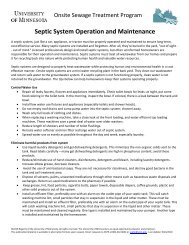Community Assessment Report - Onsite Sewage Treatment ...
Community Assessment Report - Onsite Sewage Treatment ...
Community Assessment Report - Onsite Sewage Treatment ...
You also want an ePaper? Increase the reach of your titles
YUMPU automatically turns print PDFs into web optimized ePapers that Google loves.
pores and channels. As a result these sites present a high potential for site and soil interface damage inaddition to the need for large soil treatment systems to provide adequate infiltration area. For thesesites, mound systems provide the following advantages:• The mound effluent enters the more permeable natural topsoil over a larger area where it canmove laterally until absorbed by the less permeable subsoil.• The bio-mat that develops at the bottom of the media/sand infiltration area will not clog thefilter media as readily as it would the less permeable natural soil.• The infiltration area within the filter media is much smaller than it would be if placed in themore slowly permeable subsoil, yet the total mound area is probably larger than it would be fora conventional soil treatment system, if one could be used.Mound systems are used primarily in shallow soils overlying a restrictive layer or elevatedgroundwater table. The shallower the soil, the more attention must be paid to transporting the treatedeffluent away from the point of application. Fifteen mound systems in Wisconsin were found to have atotal nitrogen reduction of at least 55% from the pretreatment effluent to mound toe effluent (Blasingand Converse, 2004). Sufficient numbers of mounds have been installed in Minnesota and elsewhere toprove that the mound treatment system is a Type I technology. There are more than 50,000 singlefamilymounds successfully treating sewage in Minnesota.Dispersal is primarily affected by the depth of the unsaturated receiving soils, their hydraulicconductivity, land slope, and the area available for dispersal. The mound consists of sand material, anabsorption bed, and cover material. Effluent is dispersed into the absorption bed, where it flowsthrough the fill material and undergoes biological, chemical, and physical treatment. It then passes intothe underlying soil for further treatment and dispersal to the environment. Clean sand (defined by staterule) is required for mounds to effectively treat and disperse effluent.Cover material consists of material that provides erosion protection, a barrier to excessprecipitation infiltration, and allows gas exchange. The native soil serves, in combination with the fill, astreatment media, and it also disperses the treated effluent.


